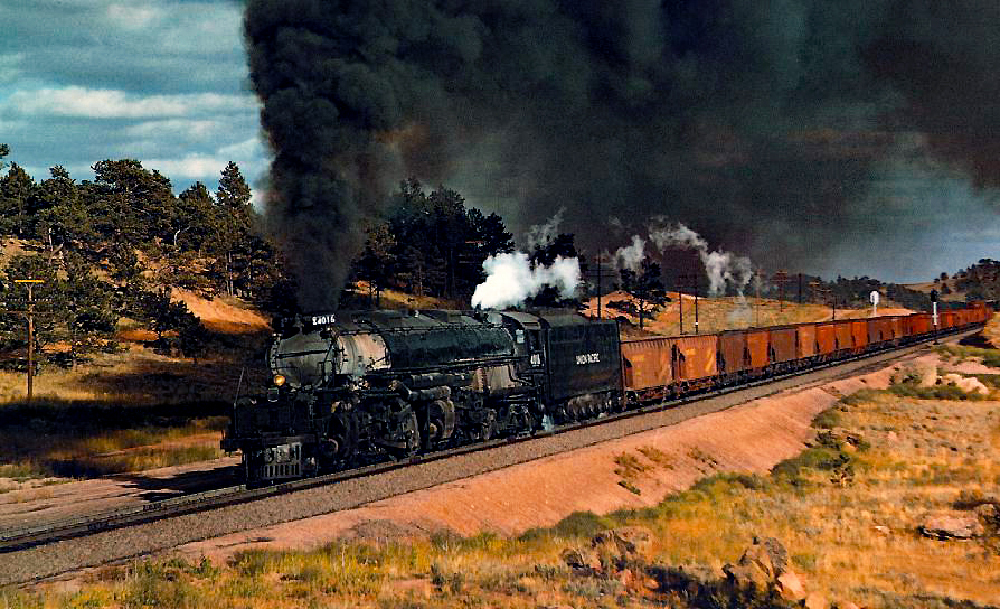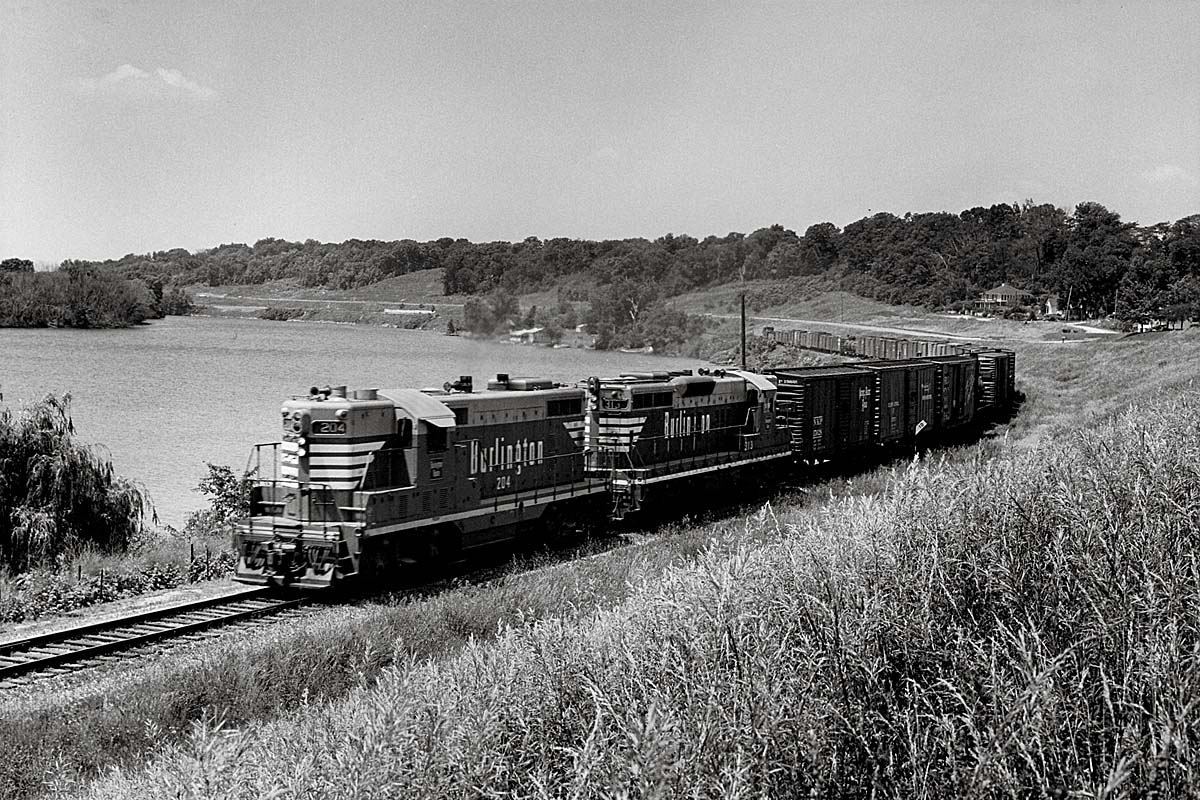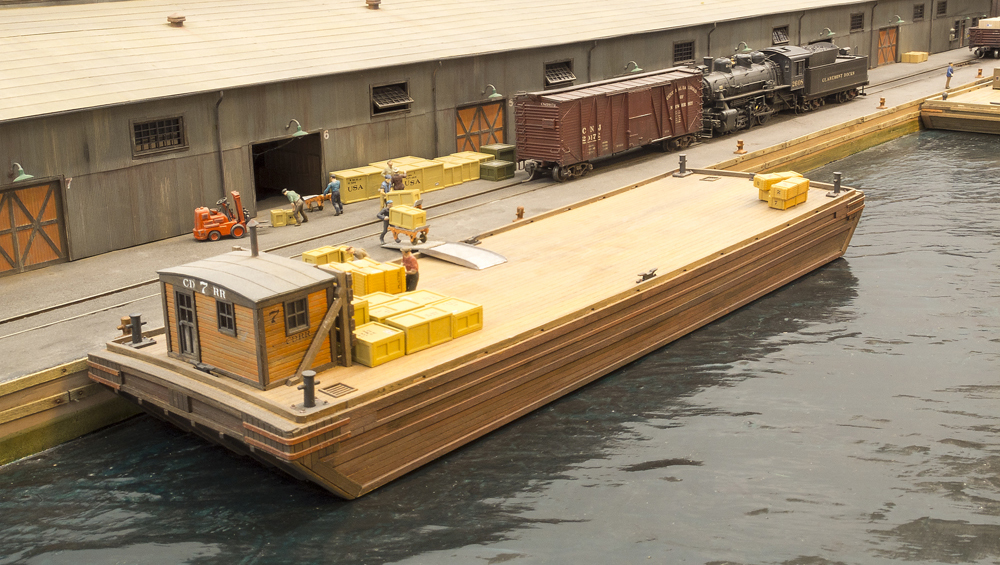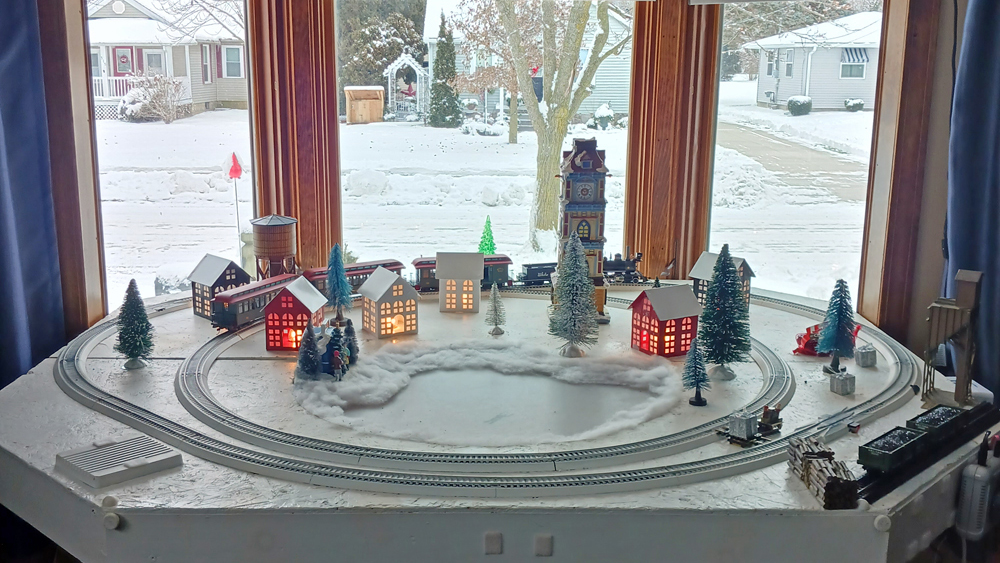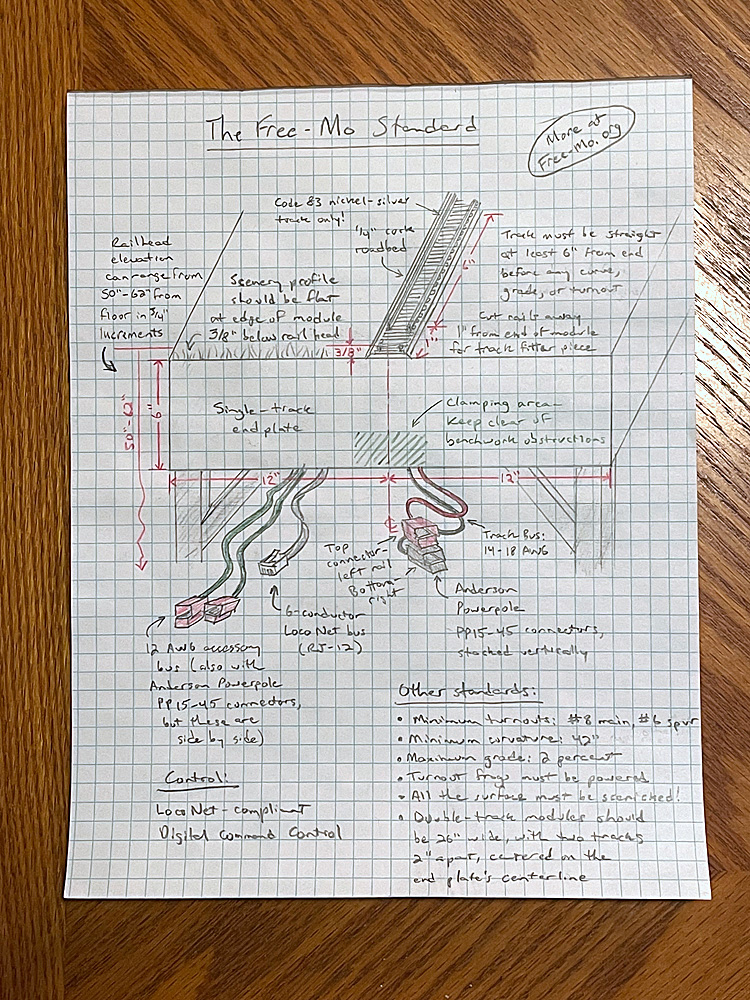
There are several modular model railroading standards out there, but one you might have heard more about recently is the Free-Mo modular standard. Like most modular standards, the Free-Mo modular standard lets you build a section of model railroad that will connect and operate with others built to the same standard. The cool thing about Free-Mo is that while it defines the end plates and connections, the shape and size of the module between those end plates is up to you. You can build yours on a curve, include grades, even make a loop or a wye. As long as the end plates match up, it’s all good. That’s where the “Free” part of the name comes in.
My first experience with modular model railroading was a club I joined about 25 years ago that had an N scale modular setup. I liked the idea of modular modeling, especially since I lived in an apartment without space for a full layout. But the club used the NTrak standard, whose three-track setup and rigid format didn’t appeal to me. Besides, I was into HO scale. Had I known then about Free-Mo, which was only getting started about the same time, I would have advocated it for our club.
What the Free-Mo modular standard contains
The basics of the Free-Mo modular standard are contained in my sketch above. (For more detail, check out Free-Mo.org.) The end plates defined by the standard are 6” high by 24” wide for single track, 26” wide for double track. The track is centered on the end plate, so modules can be turned around and joined at either end. Why are the double-track modules 2” wider, you might ask? So, when one is joined to a single-track module, the fascia will still line up on one side. Brilliant!
Although you are in theory free to build what you want between the end plates, modules should be able to run most equipment reliably. Therefore, mainline track is required to be code 83 nickel-silver flextrack, with a minimum curvature of 42” radius, no. 8 or larger turnouts, and powered turnout frogs. Smaller code rail and no. 6 turnouts can be used on secondary track.
Unlike other modular standards, Free-Mo lets you include grades, too (as long as they’re 2 percent or less). A Free-Mo module’s railhead can be anywhere between 50” and 62” off the ground, in 3/4″ increments.
Free-Mo modules are designed to be operated with Digital Command Control. The standard defines a track bus, with commercially available connectors; an accessory bus to power things like lighting, signals, and switch motors; and a LocoNet bus for use with Digitrax and compatible DCC systems.
The standard also defines some aesthetic recommendations. All the benchwork should be covered with scenic materials. Track should be ballasted with fine light gray ballast, rail painted with Roof Brown, and ties weathered with a fine spray of Grimy Black.
This might sound like a lot of rules, but they still allow a lot of freedom and are a lot looser than other modular standards. If you have a limited amount of space for a layout, want to experiment with a different locale or era, or want to participate in the more social and cooperative side of our hobby, join (or start) a Free-Mo club in your area and get building.






